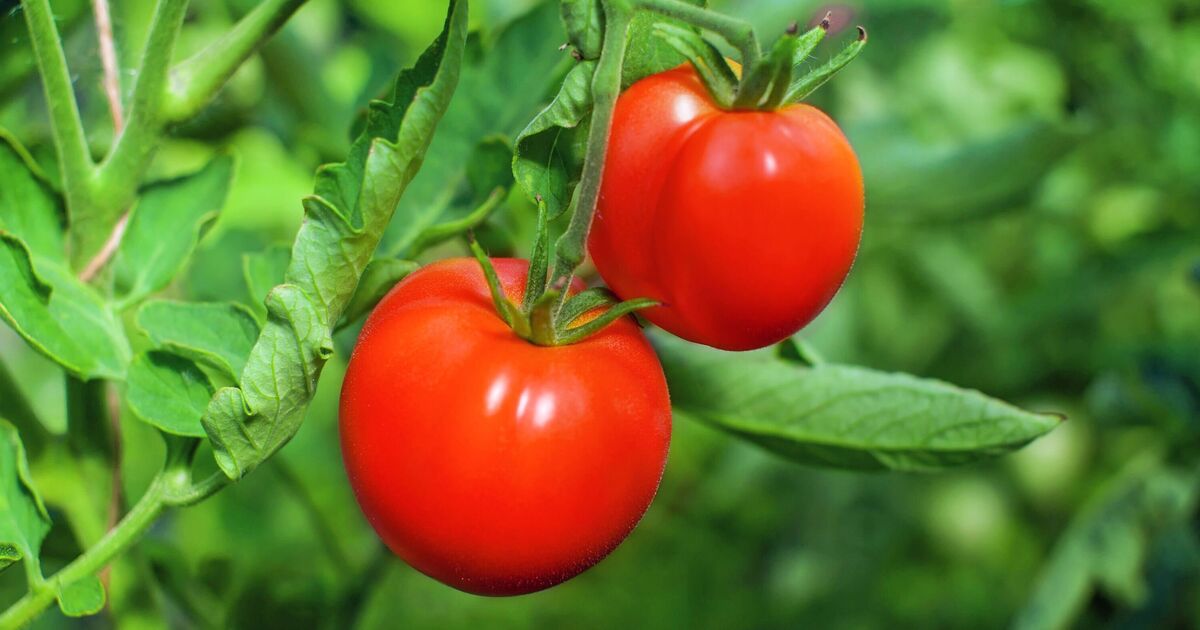Monty Don’s tomato-growing guidance is excellent for anyone seeking to maximise their plants’ potential this season. Cultivating your own produce can feel quite intimidating, particularly at this time of year when gardening tasks become increasingly crucial and urgent.
For tomatoes, August marks the approach of their peak harvesting season. Nevertheless, Monty Don has highlighted several tasks that tomato cultivators should “do now”. The initial step involves removing the bottom half of the leaves from each plant. This allows light and air to penetrate, ensuring developing fruits receive more sunshine, whilst the additional ventilation will “reduce the risk of disease”.
The second task is to reduce the watering “unless it is very hot” to avoid the fruit splitting.
However, one of the most vital actions gardeners should take is to “keep up a weekly feed of liquid seaweed or, if you can make it, homemade comfrey feed” as these are “ideal for maximising flower and fruit production”.
Comfrey is a herbaceous perennial that serves as an outstanding plant fertiliser and compost activator. Any organic garden should include a comfrey plant as an essential.
It supplies all nutrients required by developing plants – especially nitrogen, phosphorus and potassium. It is especially good for feeding tomatoes and other hungry crops grown in planters and growbags.
Whilst comfrey feed can be purchased from garden centres, gardeners may also create their own. To begin, trim the leaves of a comfrey plant about 5cm above the ground. It’s advisable to wear gloves as the stems are coated with coarse hairs that can cause skin irritation.
Add the leaves to a large container, weigh them down with a brick or stone before filling the bucket up with water.
Add the lid and leave the container alone for three to six weeks to let the leaves start to rot down. You can start checking the process after around three weeks.
You may want to leave the brewing fertiliser at the end of your garden or as far away from the house as it gives off quite a pungent odour.
Start checking how quickly the leaves are decomposing after around three weeks. The fertiliser will be ready to use once the leaves have completely decomposed and are lying in a container of brown fluid.
Once you have strained off the liquid, you can either add the leaves to your compost heap, where they will help accelerate the composting process and add extra goodness to the mix.
You can also use them as a type of mulch around your plants. They will continue to break down and release nutrients and minerals into the soil, benefiting the rest of the yard.
Once you have strained off the liquid, you can either add the leaves to your compost heap, where they will help accelerate the composting process and add extra goodness to the mix.
You can also use them as a type of mulch around your plants. They will continue to break down and release nutrients and minerals into the soil, benefiting the rest of the yard.
If you don’t get a chance to use up all of your homemade comfrey fertiliser this year, store it somewhere cool and dark, and it should still be perfectly good to use next year.
Comfrey fertiliser will give a real boost to other hungry crop plants such as peppers, cucumbers and squash. It is also good for young fruit bushes.

